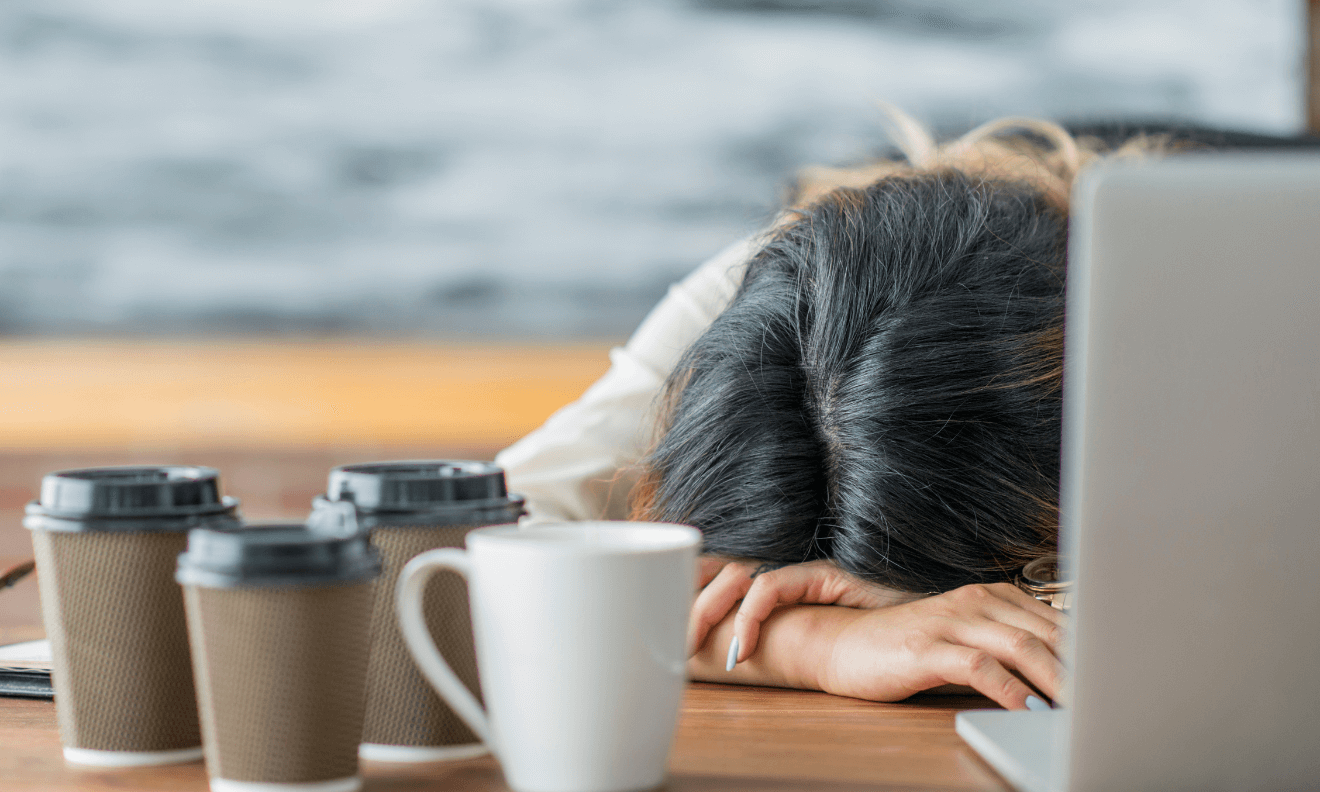Three weeks ago, the term didn’t even exist. Now everyone, it seems, can relate to the phenomenon of virtual exhaustion. Put simply, virtual exhaustion is the feeling of being inexplicably tired at the end of a day of working from home. It’s slightly perplexing because on the face on it, working from home should be less energy sapping, not more. After all, most people have replaced the daily commute with a short stroll from the bedroom to the home office.
Since it’s likely that we will be working from home for an absolute minimum of three months, it’s vital for leaders to understand the underlying causes of virtual exhaustion, so that they can ensure their own wellbeing and that of their teams.
There seem to be a number of factors that are contributing to this disconcerting trend. Here are some of them:
Increased Screen time:
It seems like a lifetime ago but think about what your typical day looked like at the office, and the number of activities that didn’t involve looking at the screen: face to face meetings, walking to and from those meetings, talking with colleagues around the water cooler and possibly your commute. These ordinary day to day events either don’t happen or are replaced by video calls.
This increased time in front of the screen is leading to increased time sitting. There is a long list of health concerns associated with sitting for extended periods of time. One of which is impaired cognitive function associated with poor regulation of the body’s glucose levels. This can lead to us feeling tired and unable to concentrate.
According to research from the University of Washington, sitting with poor posture can also be contributing to you feeling tired. Poor posture causes the body to use more energy to hold your head up. Believe it or not, your head weighs approximately 5kg. As a result, while it may feel like you are simply sitting motionless in front of a screen, the body is working overtime.
Extending that screen time well into the evening will have a big impact on your sleep. According to the sleep foundation using electronic devices during the evening will suppress the release of the hormone melatonin. That makes it more difficult to fall asleep and stay asleep. It also reduces the amount of REM sleep you are able to have which will compromise your alertness the next day.
Anxiety:
Beyond Blue states that “in a 12-month period over 2 million Australians will experience anxiety” and that number is expected to rise during this period of COVID-19. According to anxiety specialists, Calm Clinic, anxiety can cause fatigue for a number of reasons, including adrenal fatigue: “Anxiety is like being on high alert. Your body is preparing you to fight or flee; and so the body is flooded with energy in order to respond to a threat. Then, when that adrenaline runs its course, your body goes through a crash that can leave you feeling drained.”
They go on to highlight that anxiety also causes mental tiredness “Anxiety taxes our cognitive capacities, leading to a drain on our ability to think and react. It also increases our emotional load (due to the distressing thoughts), which means we are both emotionally and mentally drained. So it should come as no surprise that all those thoughts make your body tired to the point where it wants you to rest.”
Cognitive overload:
The pre-frontal cortex is the part of the brain that lets us think consciously, plan, organise, analyse, make decisions and comprehend complex information and relationships. The brain draws approximately 20% of the body’s available energy and increased mental demands draw more oxygenated blood into the brain as neurons need fuel to fire.
From the viewpoint of our pre-frontal cortex, it’s like someone has turned a fire hydrant on. All of a sudden, work has become a torrent of back-to-back interactive conference calls, overflowing inboxes and check-in calls. Recalibrating to the new normal of a virtual environment is demanding much more of the body’s energy reserves as the ‘thinking’ part of the brain works overtime.
Some Recommendations:
1. Get good Quality Sleep
In addition to avoiding screen time in the evening, there are a number of approaches that support our ability to sustain quality sleep. One of the tips provided by “The Sleep Doctor” Michael Brues is to go to bed and wake up at the same time night every night to keep our circadian rhythms in balance. Regular exercise, and diet are equally crucial. And while following the stay at home directions, it’s important to get 15 minutes of sun in the morning to help regulate melatonin production.
2. Manage your anxiety
In our Webinar Leading Through Difficult Times clinical and organisational psychologist (and SMG Founding Partner) Virginia Mansell provided some practical tools for helping leaders manage anxiety during these times. These include getting the physical environment right when working from home, applying external strategies for managing social isolation, and using mental ‘reframing’ techniques to maintain a sense of boundless optimism. More helpful resources on managing anxiety can be found from the Australian Psychological Society website.
3. Prioritise Movement
Getting regular movement in throughout the day will help combat virtual exhaustion. The World Health Organisation recommends interrupting your sitting every 30 minutes, it may be as simple as standing up and doing a few stretches. For longer breaks they recommend going for a walk even if it is just around your home. “Even in small spaces, walking around or walking on the spot, can help you remain active. If you have a call, stand or walk around your home while you speak, instead of sitting down”. If you decide to go outside to walk or exercise (which is still currently allowed in Australia at the time of this article), be sure to maintain at least a 1.5-metre distance from other people. It is also important to continue to get the minimum amount of physical activity in. WHO recommends 150 minutes of moderate intensity exercise or 75 minutes of vigorous intensity exercise per week. With the wealth of online exercise classes available you can still get your exercise in at home. Many of these are free and can be found on YouTube or if you want something more tailored and structured most fitness professionals have an online program available. Always be cautious and aware of your own limitations when beginning any exercise program.
4. Calm your nervous system
All of the elements discussed in this article put significant stress on our nervous system and it is important to deliberately take steps to calm it down. One of the best ways to calm your nervous system is with diaphragmatic breathing. World renowned Psychologist Rick Hansen says that breathing from your diaphragm stimulates the parasympathetic nervous system because it slows down your breathing. If you put your hand on your stomach and it rises up and down slightly as you breathe, you know you’re diaphragm breathing. Hansen also recommends combining diaphragmatic breathing with mindfulness—the practice of calmly resting your attention on whatever is happening in the present moment. If your sympathetic nervous system is in a constant state of arousal, mindfulness helps restore the proper balance between the sympathetic and parasympathetic systems by increasing the activity of the latter. This creates a feeling of calm and relaxation.
It’s likely that some aspects of working virtually will stay with us well beyond the current Covid-19 crisis. And therein lies an opportunity. While the immediate challenge is to overcome the wellbeing issues of being immersed in technology 24-7, we can begin to develop the healthy disciplines that allow us to harness the future potential of working remotely.










